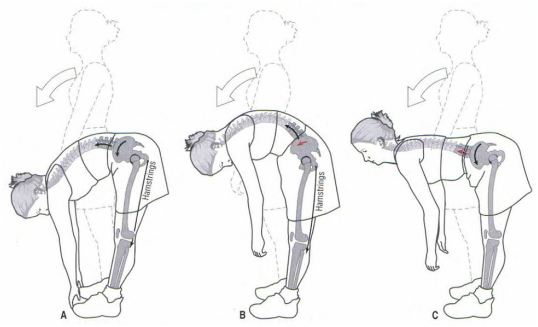View basket (0 items $0.00)
Error message
- Notice: unserialize(): Error at offset 5 of 154 bytes in variable_initialize() (line 1202 of /home/dh_6hcdc2/yogau.online/docroot/includes/bootstrap.inc).
- The file could not be created.
- The file could not be created.

Low Back Love: How’s Your Lumbopelvic Rhythm?
Lumbopelvic rhythm sounds like something you need for dancing. It sort of makes me think of Elvis. While we’re not exactly talking about the pelvic gyrations of Elvis, your low back and pelvis do have some rhythm and dance with each other.
Lumbopelvic rhythm refers to the way that the low back and pelvis move in relation to each other and with each other. And, yes, these movements happen during dancing too!
Lumbopelvic Hip Complex
“Lumbo” refers to the lumbar spine or low back, and “pelvic” refers to the pelvis. “Hip” is pretty self-explanatory and is thrown into the mix too. We bunch it all together because we often look at these parts together. In fact, they are intimately linked in movement. I sometimes joke that it is called a complex because it is soooo complex!
But no worries. It’s not that overwhelming. For now, note that the low back, pelvis, and hips all move together. You can see for yourself by putting your fingers around your pelvis and tilting it forward or backward. You’ll notice that you can’t tilt your pelvis without moving your low back too. Also, when you tilt the pelvis, you’ll be automatically getting hip movement.
Lumbopelvic Rhythm in Forward Folds
Good lumbopelvic rhythm is essential for safety in forward folds. Take a look below at the ways that your low back, pelvis, and hips can dance together during a forward fold.

1. Normal Rhythm
Most of the folding is from the hips, and only some are from the low back. This allows most of the work to be done with the big hip muscles like the gluteus maximus and lightens the load on the smaller low back muscles.
2. Round-Back Rhythm
Most of the folding is from the low back, and only a little is from the hips. This puts a lot of stress on the low back muscles and can increase the risk of strain and injuries.
3. Flat-Back Rhythm
This is what we mean by "hinge at the hips.” When we hinge at the hips and keep the back flat, pretty much all of the folding is from the hips, and we take the work of the movement away from the low back. This is the rhythm in Uttanasana (Standing Forward Bend Pose), and other yoga forward folds.
How’s Your Lumbopelvic Rhythm?
Proper hip hinging in a flat-back rhythm can help save you and your students’ backs in forward folds. If a flat back is hard to achieve, vary the folding pose by bending the knees until the pelvis can tilt forward, and the back can flatten. Check out your hip rhythm in your next practice!
Reprinted with permission from Dr. Nolan Lee and balancedflow.today

Dr. Nolan Lee is a yoga teacher and physical rehab specialist in Chicago, IL, with an extraordinary passion for understanding how the body moves and functions. Nolan has the unique ability to blend the science of anatomy with the art of yoga. With an active practice at this clinic, Balanced Flow Wellness, he practically applies yoga to restore and maintain health. Dr. Lee also holds a Master of Acupuncture degree and is a NASM certified corrective exercise specialist (CES). He enthusiastically shares his knowledge of yoga and anatomy in lectures, workshops, and on his blog.
Featured Courses









